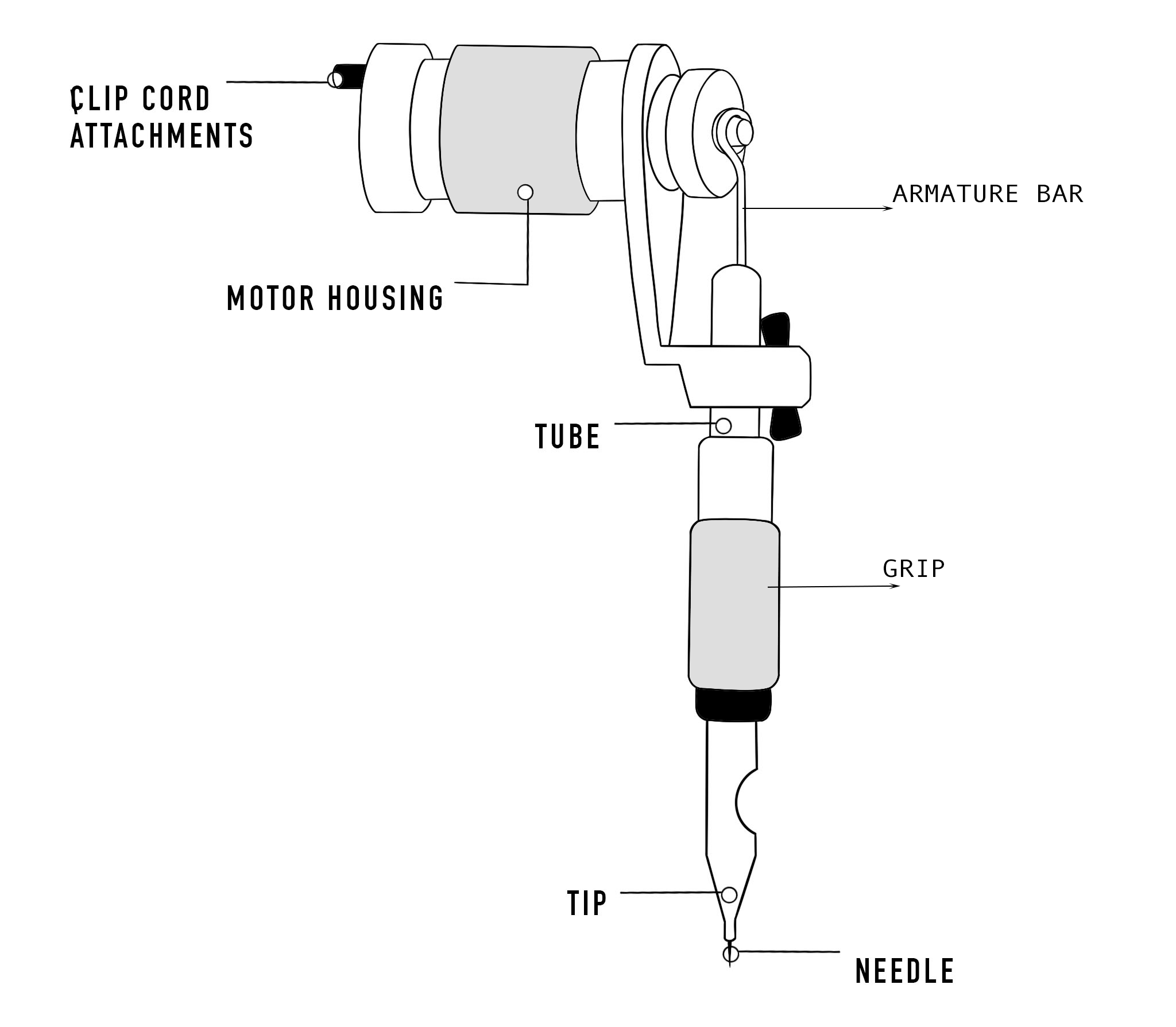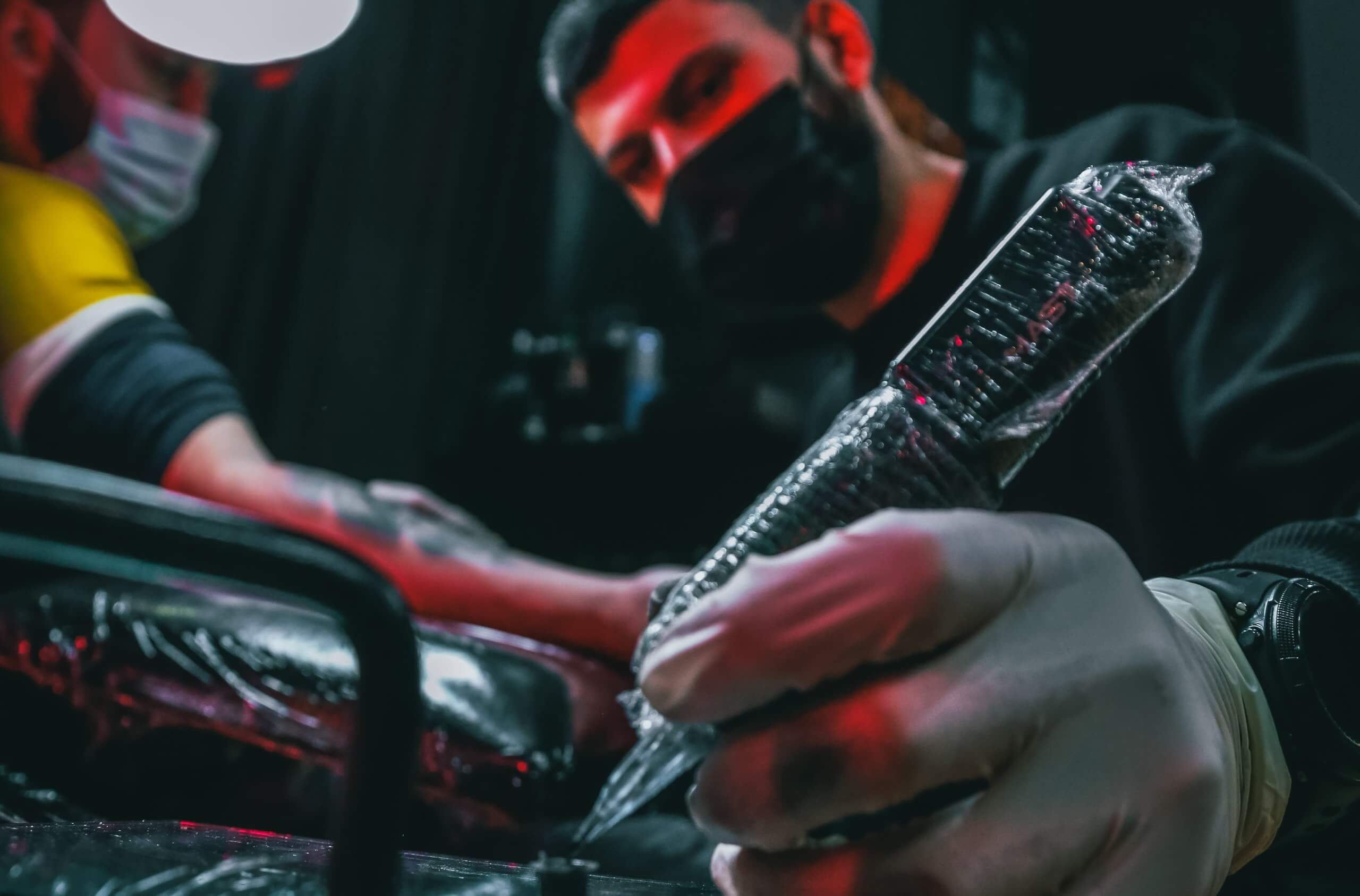A tattoo machine is a hand-held device that uses needles to create a permanent marking on the skin with indelible ink. In this article, we will explore how tattoo machines work and the features of work of different machines types available.
We will also discuss the components of a tattoo machine and how to choose the right machine for your needs. Finally, we will cover tattoo machine maintenance and common problems to avoid. Whether you are a tattoo artist or simply curious about the art of tattooing, this article will provide you with a comprehensive understanding of how tattoo machines work.
Two primary types of tattoo machines dominate the industry: rotary and coil. Both have unique mechanisms of operation, and understanding these peculiarities can help in appreciating the artistry and technical skill behind each tattoo.
We will also discuss the components of a tattoo machine and how to choose the right machine for your needs. Finally, we will cover tattoo machine maintenance and common problems to avoid. Whether you are a tattoo artist or simply curious about the art of tattooing, this article will provide you with a comprehensive understanding of how tattoo machines work.
A Brief History of Tattoo Machines
Tattooing has been practiced for thousands of years across various cultures. However, the modern tattoo machine has its roots in the late 19th century. Samuel O’Reilly, an American tattoo artist, patented the first electric tattoo machine in 1891. This invention was inspired by Thomas Edison’s electric pen, which was designed a few years earlier. O’Reilly’s machine revolutionized the tattoo industry, making the process faster, more consistent, and less painful.Anatomy of a Tattoo Machine
Understanding how a tattoo machine works requires a basic knowledge of its components:- Needle: The needle is the part that punctures the skin, depositing ink into the dermis, the second layer of skin. These needles can be singular or multiple, depending on the desired effect.
- Tube: This component holds the needle and provides a pathway for the ink to flow. It also helps in controlling the depth of the needle penetration.
- Grip: The grip is the part of the machine that the tattoo artist holds. It can be made of various materials and is often ergonomically designed for comfort.
- Motor: Powers the movement of the needle. Depending on the type of tattoo machine, this could be electromagnetic or rotary.
- Armature Bar: This is a metal bar that connects the needle to the machine. It moves up and down, causing the needle to move in and out of the skin.
- Springs: These control the movement of the armature bar and needle. They determine the speed and force of the needle’s movement.

The Mechanics of Tattooing
Tattooing involves puncturing the skin thousands of times per minute to deposit ink into the dermis. The machine’s needle moves in a cyclical pattern, driven by the machine’s motor or electromagnetic circuit. As the needle moves down, it opens a small puncture in the skin, and as it moves up, it draws ink from the tube, ready for the next cycle.How Does a Tattoo Gun Work?
When the tattoo machine is powered on, electricity flows through its circuit. In coil machines, this creates a magnetic field that moves the armature bar and needle. In rotary machines, the motor’s rotation drives the needle’s movement. As the needle moves, it draws ink from the tube and deposits it into the skin. The speed and depth of the needle’s movement can be adjusted, allowing the artist to create different effects.Two primary types of tattoo machines dominate the industry: rotary and coil. Both have unique mechanisms of operation, and understanding these peculiarities can help in appreciating the artistry and technical skill behind each tattoo.
Rotary Tattoo Machines Mechanism:
- Simple Mechanism: Rotary machines operate using a straightforward mechanism. A small motor inside the machine rotates, which directly drives the movement of the needle.
- Consistent Movement: The rotary machine’s needle moves in a smooth, cyclical pattern. This consistent motion can lead to more even lines and shading, making it a favorite for some artists, especially for shading and coloring.
- Quiet Operation: One of the standout features of the best rotary machines is their quiet operation compared to coil machines. This can create a more relaxed environment for both the artist and the client.
- Less Vibration: Rotary machines tend to produce less vibration. This can lead to more precise work, and it’s also more comfortable for the artist during long tattoo sessions.
Coil Tattoo Machines Mechanism:
- Electromagnetic Mechanism: Coil machines operate using an electromagnetic circuit. When electricity passes through the two coils, it creates a magnetic field that pulls the armature bar down. This movement drives the needle into the skin. When the circuit breaks, the magnetic field collapses, and the armature bar is pulled back up by the springs, retracting the needle.
- Adjustability: Coil machines offer a high degree of adjustability. Artists can modify the machine’s speed, power, and needle depth by adjusting the machine’s components, such as the armature bar’s weight, the spring tension, and the coil’s strength.
- Distinctive Sound: Coil machines produce a distinctive buzzing sound, which many associate with the tattooing process. This sound results from the rapid oscillation of the armature bar.
- More Vibration: Due to their mechanism, coil machines tend to produce more vibration than rotary machines. This can be fatiguing for the artist over extended periods but is often considered a familiar sensation by many tattoo professionals.
How Does Pneumatic Tattoo Machines Work?
Pneumatic tattoo machines are a relatively modern addition to the world of tattooing, offering a unique mechanism of operation compared to the more traditional coil and rotary machines. As the name suggests, pneumatic machines utilize air pressure to drive the movement of the tattoo needle. Here’s a detailed look at how they work:- Air Compressor: The primary component that differentiates a pneumatic tattoo machine from other types is its reliance on an external air compressor. This compressor generates and regulates the air pressure required to operate the machine.
- Air-Driven Mechanism: When the machine is activated, the air compressor pushes a controlled stream of air into the machine. This air pressure moves a small piston inside the machine, which in turn drives the needle’s up-and-down movement. The continuous flow of air ensures that the needle oscillates at a consistent rate, allowing for even ink distribution.
- Adjustability: The speed and force of the needle can be adjusted by regulating the air pressure from the compressor. Higher pressure results in faster needle movement, while lower pressure slows it down. This adjustability allows the artist to fine-tune the machine’s performance based on the specific tattooing task, be it lining, shading, or coloring.
- Lightweight and Low Vibration: One of the notable advantages of pneumatic tattoo machines is their lightweight design. Since they don’t rely on heavy coils or motors, they are often more comfortable to handle, especially during extended tattoo sessions. Additionally, they produce minimal vibration, which can lead to more precise work and reduced fatigue for the artist.
Tattoo Machine Maintenance
- Cleaning: It’s crucial to clean the tattoo machine after every use to prevent infections and maintain its performance. The grip, tube, and tip should be sterilized, and disposable needles should be discarded safely.
- Lubrication: Some parts of the machine, especially in coil machines, require regular lubrication to ensure smooth operation and reduce wear.
- Replacement Parts: Over time, parts like springs, armature bars, and even coils might need replacement due to wear and tear. Regularly inspecting and replacing worn-out parts ensures the machine’s longevity and consistent performance.

